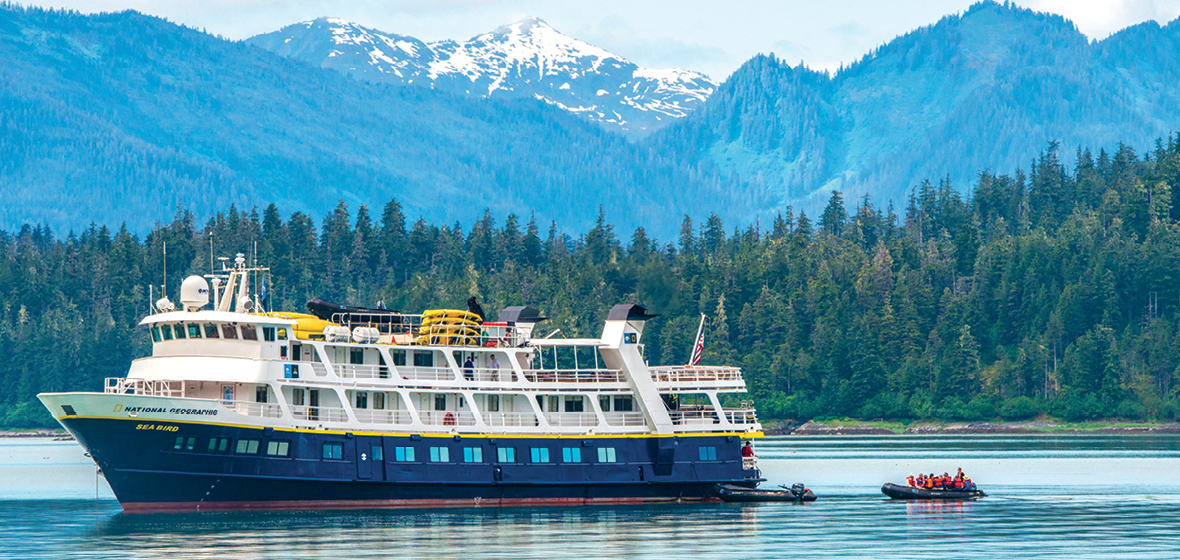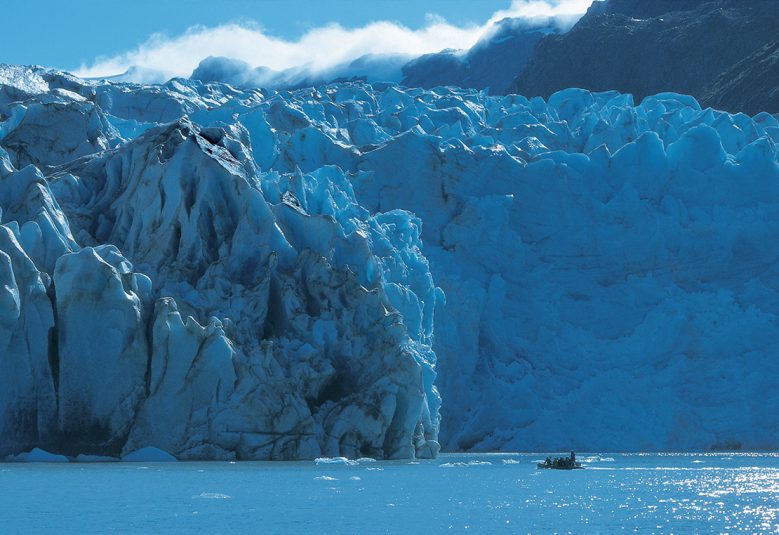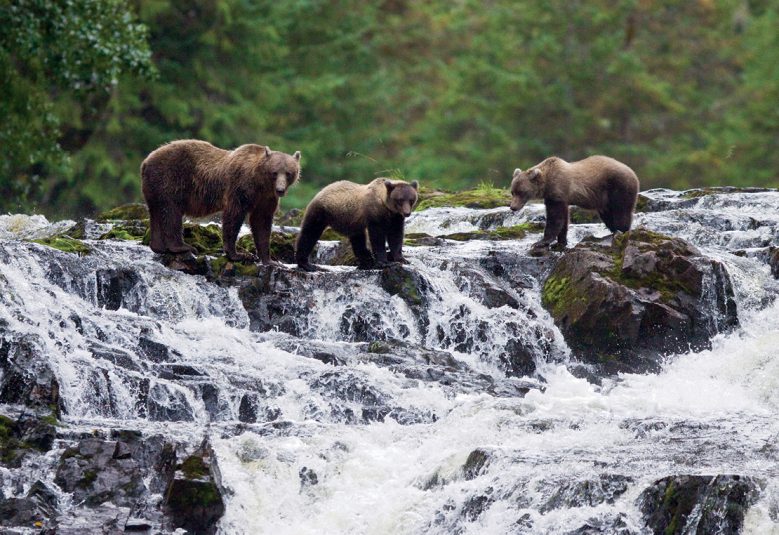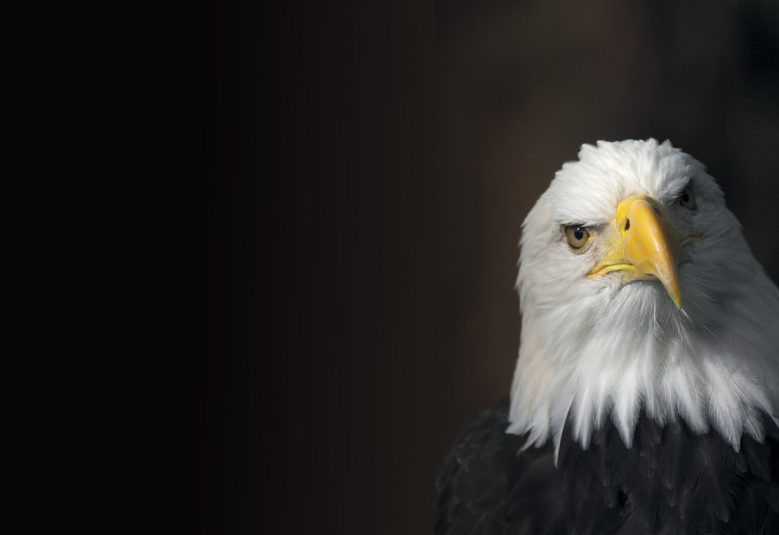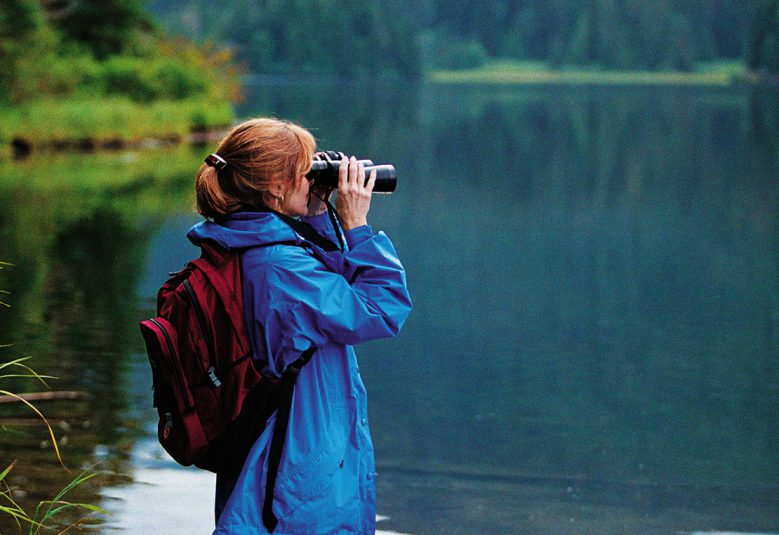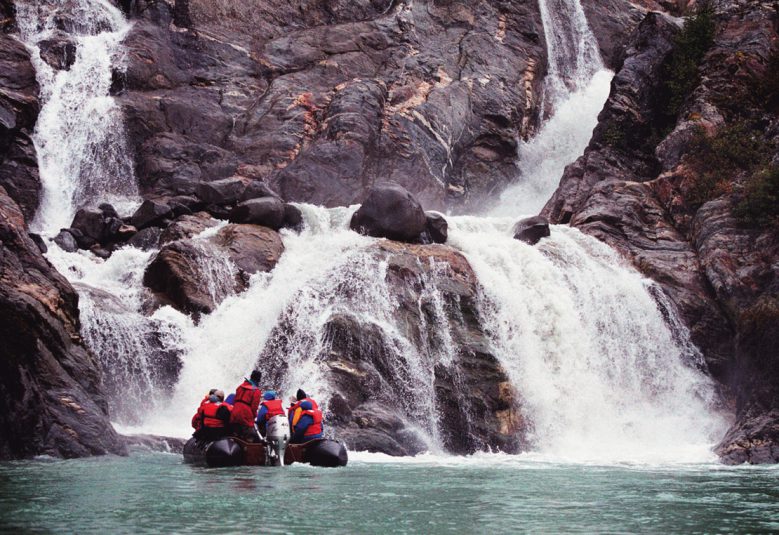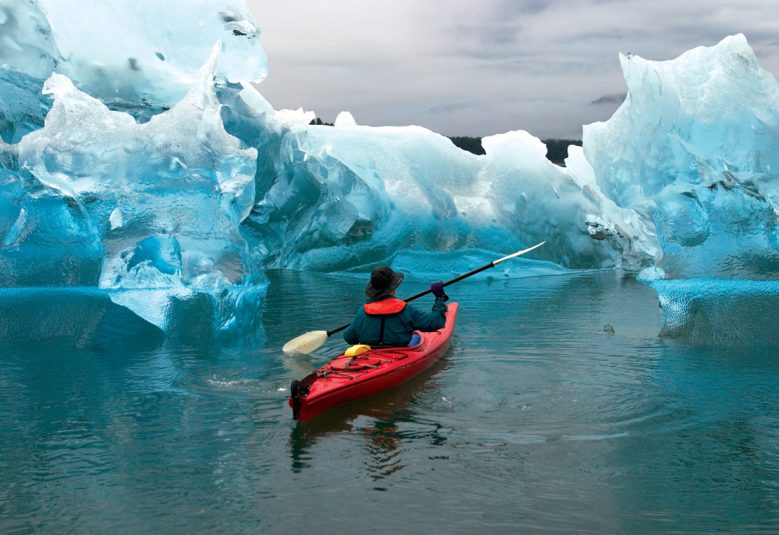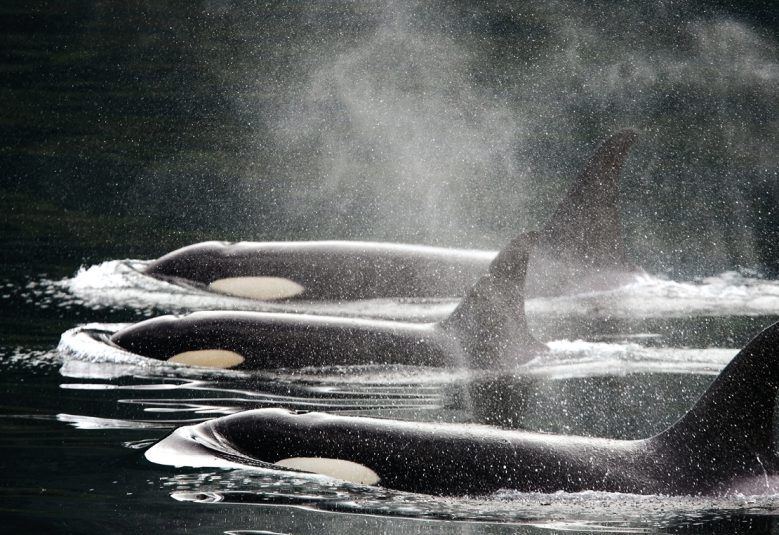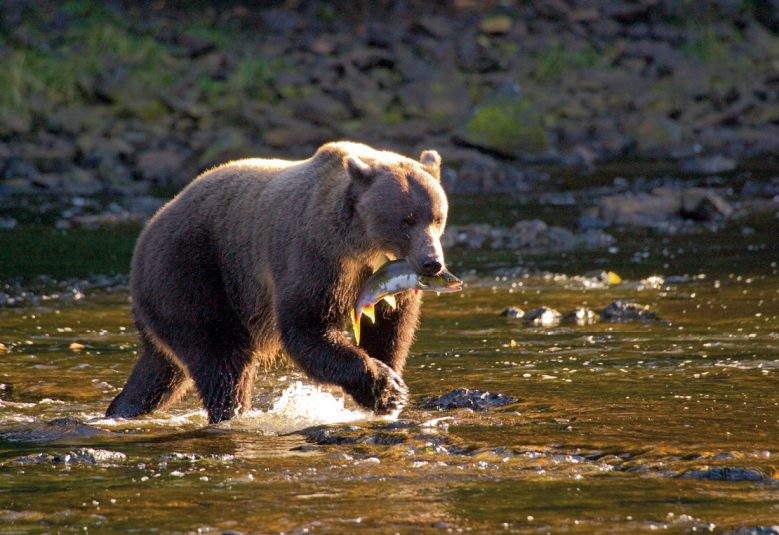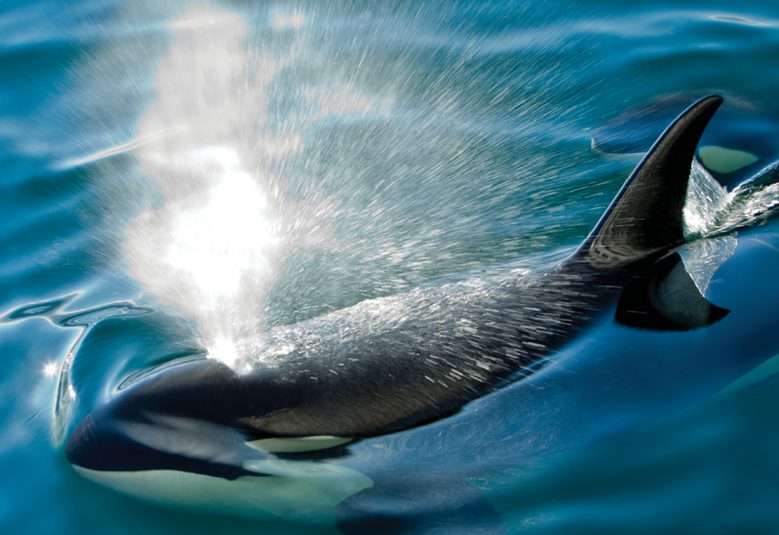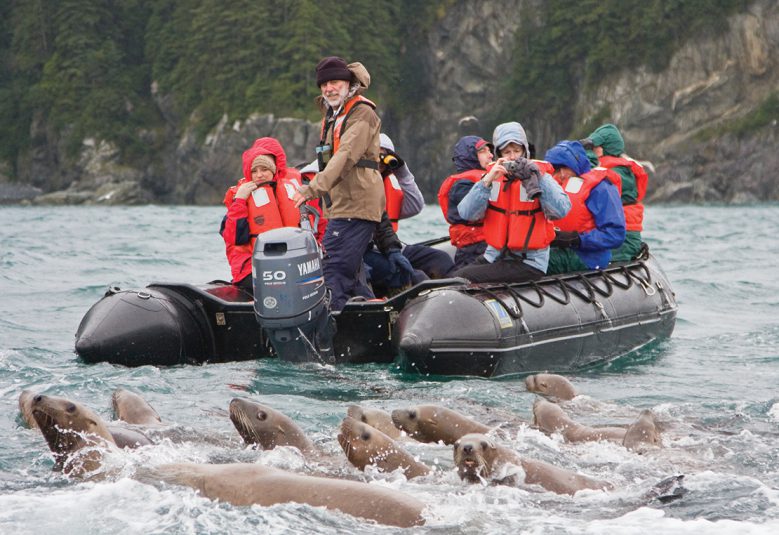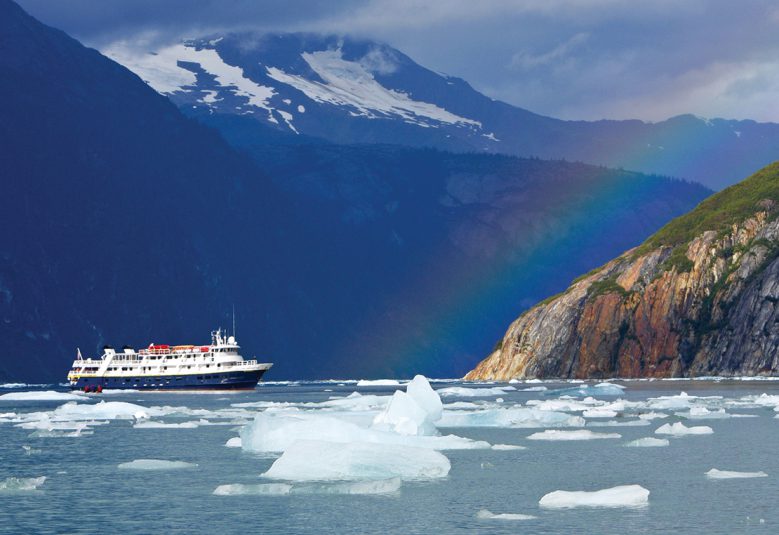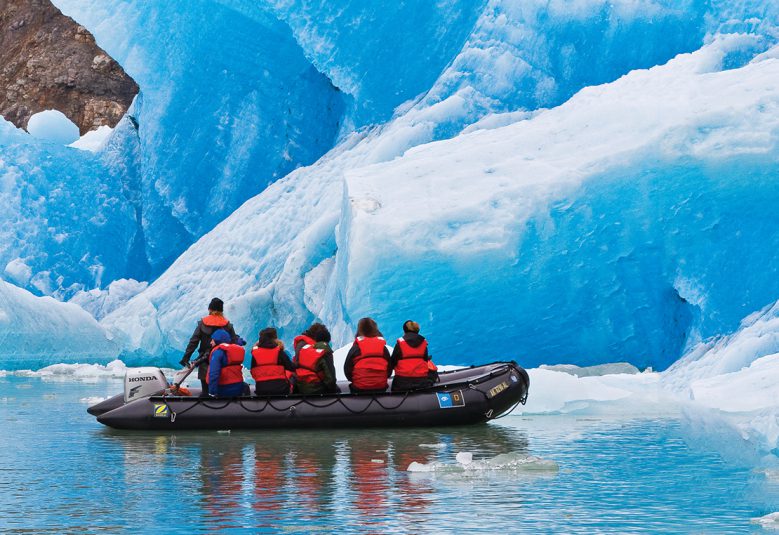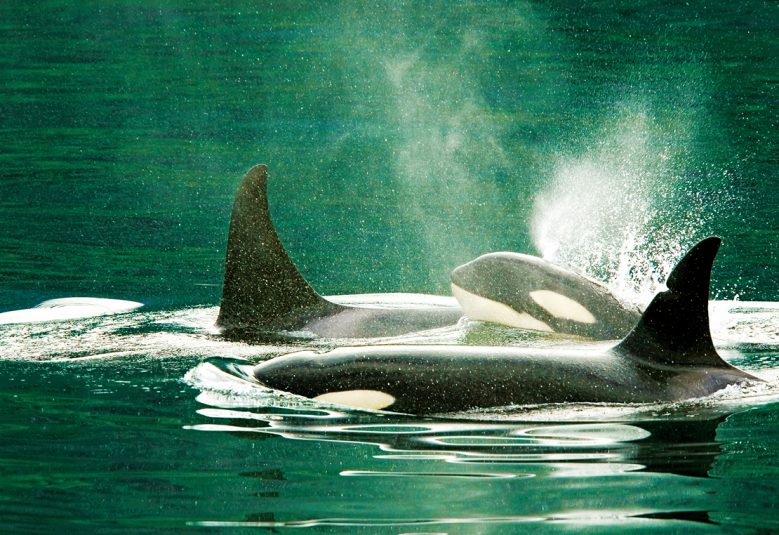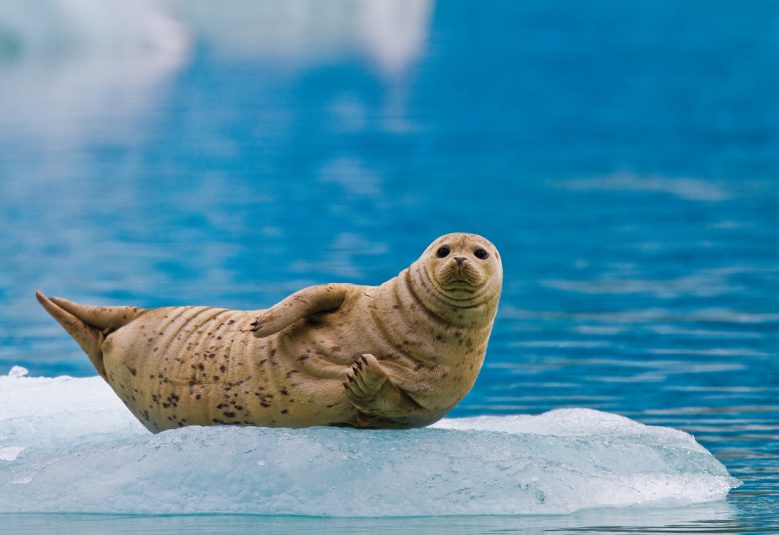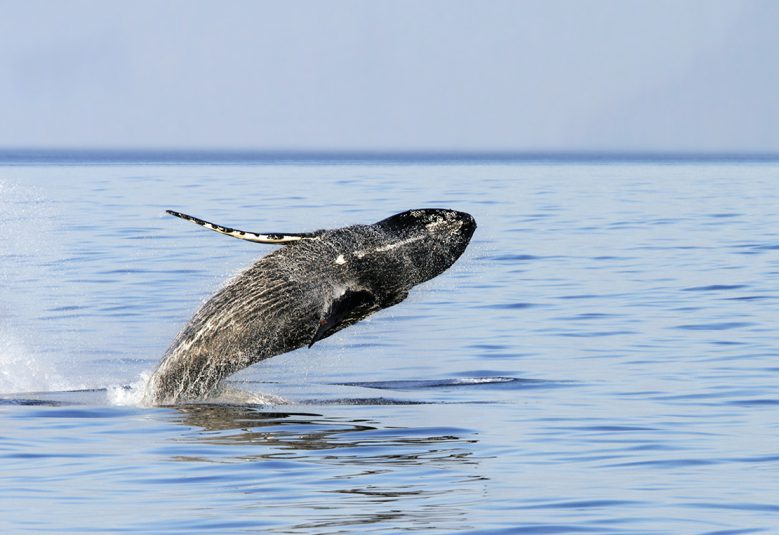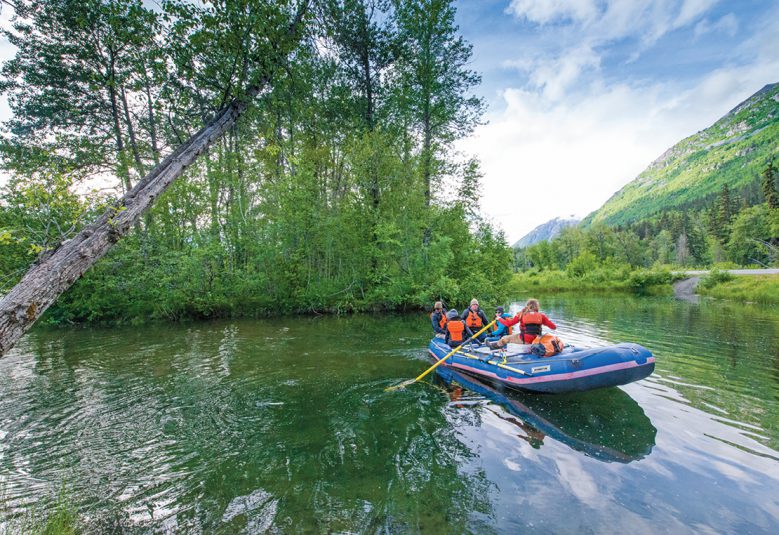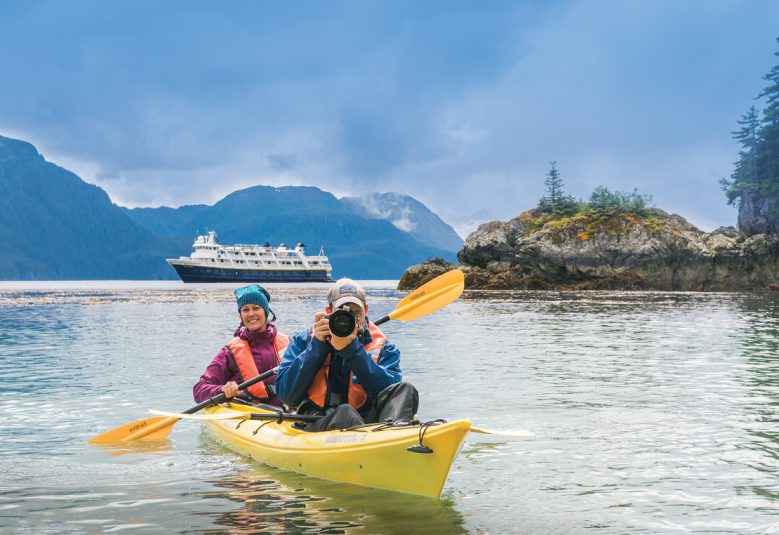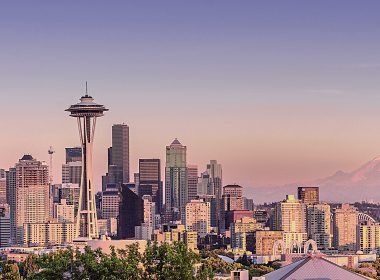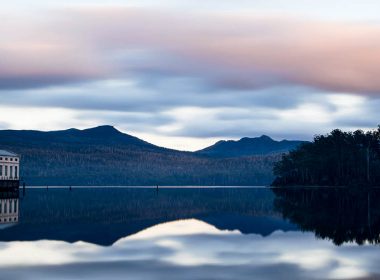Alaska’s fjords, forests and pristine oceans offer superb wildlife viewing.
We are moving almost noiselessly through the forest. Our feet land softly on the mossy ground, and the dappled shadows thrown by tall trees further disguise our movements. This is a problem. We are in bear country – the very path we are walking on was shaped by bears – and a surprised bear is an angry bear. Which is why, as we walk, our guide occasionally hollers out “Hello bear!”, alerting any unseen animals to our presence.
Alaska is the United States’ last wilderness, a haven not just for brown bears and black bears, but also for bald eagles, whales and sea lions. There are few roads here; if you want to explore its forests and fjords, the best option is to set sail. Aboard the National Geographic Sea Lion, a compact expedition cruising vessel that takes just 60 passengers, our itinerary is focused on the southeast of Alaska – which still gives us 91,000 square kilometres to explore.
We spend much of our time weaving through the island-studded bays and channels known as the Inside Passage, which we explore in a variety of ways. Sometimes we head out in Zodiac inflatables, heading up inlets where we spy sea otters floating on the water’s surface amid long strands of kelp. Sometimes we head out in kayaks, skirting the coast and admiring starfish and anemones through the crystal-clear water. And sometimes we pull on our gumboots and walk.
Yes, gumboots. These are listed as an essential item on the equipment list for the cruise and, once we arrive, it’s easy to see why. In southeast Alaska, if it is not actually raining, it will probably start soon. All this rain nourishes the area’s thriving temperate rainforest. Beneath the soaring, centuries-old stands of western hemlocks and Sitka spruces, a rich understory of shrubs and ferns flourishes. Mushrooms grow on tree trunks, moss squelches underfoot, and the sound of trickling streams and brooks is ever-present.
On hiking days, passengers can choose between short and long hikes, as well as photography-themed walks. In practice, however, how the walk pans out depends largely on which of the ship’s half-a-dozen naturalists is in charge. For instance, Larry’s walks never seem to get quite as far as they should, but no-one minds: a born storyteller, Larry always spots so many interesting things along the way that there is more talking than walking. On Sharon’s walks, guests often end up lying on the ground, literally looking at things from a different angle. Lauren, driven by her stomach, is a relentless forager, encouraging us to try everything from the bulb of the chocolate lily (which has a crunch like water chestnut, but a creamy mouthfeel like rice pudding) to an array of colourful berries, from salmonberries to watermelon berries.
Berries, it turns out, are also a favourite with bears. On our walks, we regularly pass bear droppings and quickly learn to deduce what a bear has eaten from the state of its dung. Bears that have been feasting on salmon have an oily sheen to their dung, while the droppings of grass-grazing bears resemble those of a horse. Berry-eating bears, of course, have dung studded with undigested berries.
Every day unfolds differently, but they all start in the same way: either with a 7am stretch class, or 30 minutes later with an expansive breakfast buffet, where eggs benedict sit alongside hash browns and scrambled eggs. The morning is generally filled with activities; after lunch there may be more activities, or perhaps presentations by the naturalist team on what we will be encountering tomorrow. By the time the three-course dinner is over, we are ready to head to bed, excited about what the next day will bring.
Some days, we enjoy amazing wildlife experiences without even leaving the ship. As we cruise through Glacier Bay National Park, where the mighty Johns Hopkins Glacier glows a dozen different shades of blue, we pass not one, not two, but three mother bears, each with two cubs in tow. The ship stops for half an hour to allow us to watch these impressive animals foraging along the shoreline, turning over rocks to find crustaceans and molluscs.
Our trip is not just about the great outdoors, however. This itinerary from Sitka to Seattle also showcases indigenous cultures, including the Tlingit of Alaska and, in Canada, the Haida and the Kwakwaka’wakw people. We stop at historic villages, meet carvers who still make totem poles, and even attend a celebration in a long house, which culminates with everyone joining the elders on the dance floor, repeating ancient moves in a dance that none of us will forget.
Checklist
Lindblad Expeditions’ 15-day Remarkable Journey to Alaska, British Columbia & Haida Gwaii starts at $13,630 per person twin share, with departures in May, August and September.

